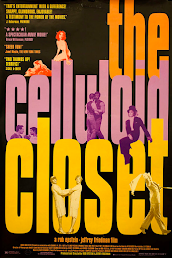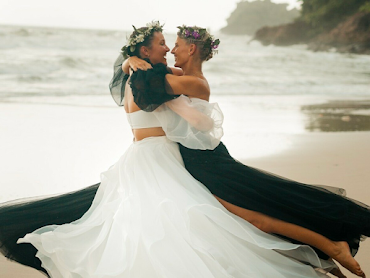Strict Scrutiny and Marriage Laws
Strict Scrutiny and Marriage Laws (1542)
Marriage, in the traditional sense, is a legal union between one man and one woman, which the government presumes will lead to the growth of the population and preserve the image of America (Eskridge 801). The stereotypical image of family in America rooted in society through social norms is the picture of a suburban house with a white picket fence, a father, a mother, and two children. American laws for a long time were written to reflect the picture of a ‘perfect’ family if and only if you met the right traits, a white heterosexual. By looking at marriage laws, you can see that they have often been used as a legal tool to bolster the white, heterosexual social order based on gaining the benefits of marriage including, but not limited to, social security rights, health care, housing, medical, and employment (Cott 78). U.S. courts claim to ensure rights to citizens using three distinct levels of scrutiny: rational basis, intermediate scrutiny, and strict scrutiny. These levels of scrutiny depend on classifications of people based on race, gender, religion, sexuality, and nationality, in addition to a legitimate, compelling, or narrow government interest. However, when different levels of scrutiny have been applied to marriage in court, questions of social belonging and national citizenship are raised. In this paper, I argue that laws regulating interracial and same-sex marriages reduce and restrict the benefits of marriage certain groups enjoy by examining how strict scrutiny applies to discrimination based on race and ethnicity, while intermediate scrutiny still applies to discrimination based on sexuality.
The transformation of regulations based on interracial marriage to acceptance by the use of strict scrutiny severely challenged discrimination based on race. A case prior to race being held to strict scrutiny was in 1922, the court case Kirby v. Kirby, where the validity of interracial marriage was being questioned (United States). Mr. Kirby, a white man, wanted to get an annulment from his wife Mayellen, a woman of color, which would make their marriage invalid, rather than a divorce where he would have to provide economic support for Mrs. Kirby. Even in divorce, there are regulations in place so both parties can make sure they are economically sustained throughout life by denying their marriage because of race. The court “[granted] Joe Kirby an annulment rather than a divorce, the judge not only denied the validity of the marriage while it had lasted but also, in effect, excused Joe Kirby from his obligation to provide economic support to a divorced wife” (Pascoe 52). Because the marriage was considered invalid, no social security, economic, or housing benefits would remain for either Joe or Mayellen. Anti-miscegenation rhetoric in the courts not only maintained “whiteness” in marriage, it also kept economic benefits from both marriage and divorce from people of color. Maintaining racial purity, which is an essential element of white supremacy, means that hybridity–the mix of two– isn’t welcome in our society. Due to the fact that by having hybridity questions the illegality of an interracial marriage, which would grant social security, social welfare, and economic benefits. Furthermore, the case Loving v. Virginia resulted in all fifty states of America nullifying their laws that discriminated against interracial marriages in 1967 (United States). The use of strict scrutiny in this case, which is the highest level of scrutiny a case can face, meant the government was not able to produce a compelling enough case to allow racial discrimination to continue in marriage. As social climates changed through the years and courts were confronted with interracial marriages, the application of strict scrutiny to interracial couples allowed them to gain the full benefits of marriage.
Throughout history, laws have changed concerning regulations against same-sex marriage. Yet, because LGBTQ people are not under strict scrutiny, they have not always been granted the full benefits of marriage, and therefore citizenship, under the law because they have lacked equal protection. In 1972, two men went to apply for a marriage license and were faced with backlash (Freedom to Marry). They were laughed at because the majority of society assumed that everyone was heterosexual and could not fathom the idea of two men making a family. In 1983, a few years after the beginning of the AIDS crisis, Evan Wolfson drafted his thesis on how marriage laws are unconstitutional because they discriminate against same-sex families (Freedom to Marry). The laws prevented same-sex couples from gaining the benefits of marriage and socially stigmatized these family models. One of the first cases that questioned discrimination based on sexuality was Baehr v. Lewin in 1993 when three gay couples went to gain marriage licenses but were turned away (Buckmire). The Hawaiian state constitution said discrimination based on marriage is unconstitutional, but because this case dealt with sexuality, the court decision used intermediate scrutiny to evaluate their claim to equal protection (Freedom to Marry). Because sexuality is not protected in your fundamental rights, unlike race, religion, and nationality, courts do not have to use strict scrutiny. Because sexuality is not held to the highest level, same-sex marriage laws allow for inequality to exist. Overall, the fact that LGBTQ+ can face discrimination based on their sexuality because the court cases have not been able to determine that sexuality should be judged based on strict scrutiny. The Baehr v. Lewin case was a pivotal moment in the social climate for homosexuality because they were legally viewing homosexuality as a reality. However, there is still legal discrimination in court cases that deal with sexauliy due to the use of intermediate scrutiny. By looking at marriage laws, you can see how same-sex couples have reduced benefits of marriage than heterosexual couples. Since, legally, marriage was between a man and a woman, homosexual couples were only allowed to get civil unions, where some states gave some marital benefits but not all. Highlighting that there is sexual discrimination due to the lack of benefits the LGBTQ+ community gets (Buckmire). Because queer people cannot always be married and gain martial tax deductions and the legal right to partner assets or estate if they die, the validity of same-sex marriages is being undermined.

By comparing the process of how marriage laws for interracial and same-sex couples have changed, we can see in the future that there could be a day when the LGBTQ+ community will be full citizens within the United States of America. The shift for racial discrimination to be legally considered unconstitutional occurred over an extended period because society's view on race had to change. This shift is reflected in the laws. By using the formula of how interracial marriage became legal and comparing it to the progress of the LGBTQ+ community advocating for the legality of marriage, there is progress but still not complete validity in their marriages. In 2015, Obergefell v. Hodges argued that it is a fundamental right guaranteed to same-sex couples to marry by the Due Process clause and Equal Protection clause (Buckmire). This moment allowed same-sex marriages in all fifty states. However, legal discrimination based on sexuality is still ruled under intermediate scrutiny instead of strict scrutiny, where the government almost never wins. Therefore, because sexuality is not held at the highest level of scrutiny, discrimination based on sexuality can still be legitimatized by a compelling government interest (Tentindo). As this paper demonstrates, laws regulating interracial and same-sex marriages reduce and restrict the benefits of marriage certain groups have. The Dobbs v. Jackson decision was ruled under a rational basis, resulting in the constitution not protecting the right to an abortion, which made people start to question whether or not same-sex marriage laws could be overturned (Melnitsky). In the future, narrowing the level of scrutiny could not only protect the same-sex marriage laws that are in place but could also better protect the broader LGBTQ+ community, including trans people and queer people of color.
As an ongoing case, L.W. v. Skrmetti, demonstrates, the lack of fundamental benefits to healthcare for trans-youth contributes to the broader struggle for equal protection under the law. In March of 2023, Governor Bill Lee of Tennessee signed the ban on gender-affirming care, L.W. v. Skrmetti, for transgender people (“L.W. v. Skrmetti”). This case took away life-saving care from transgender youth based on their gender identity (“L.W. v. Skrmetti”). Finally, when strict scrutiny can be applied to cases like L.W. v. Skrmetti, discriminatory actions based on gender and sexuality can be struck down as unconstitutional (“L.W. v. Skrmetti.”). In my fellow classmate Quinn Lewis’ words, “Until people halt using outdated notions about homosexuality and children’s “safety” as a scapegoat, it will take a very long time for LGBTQ citizens to be given respect for their bodily autonomy and expression” (Lewis). Once sexuality is socially and legally valued as inseparable from one’s identity, like race is, expressing your sexuality and gender can be considered a fundamental right. And since we have seen how malleable U.S. laws can be, there is hope that sexuality could one day be ruled under strict scrutiny. With this new label, there would be full protection of all the LGBTQ+ community based on their sexuality, which would allow them to have their full rights and privileges of U.S. citizenship.
Works Cited
“Freedom to Marry.” Winning the Freedom to Marry Nationwide: The Inside Story of a Transformative
Campaign, www.freedomtomarry.org/pages/how-it-happened. Accessed 19 Nov. 2023.
Peggy, Pascoe. "Miscegenation Law, Court Cases, and Ideologies of 'Race' in Twentieth-Century America."
The Journal of American History, vol. 83, no. 1, June 1996, pp. 44-69.
Eskridge, William N., Jr, and Nan D. Hunter. Sexuality, Gender, and the Law. Westbury, New York, The Foundation Press, Inc., 1997.
United States, U.S. Supreme Court (U.S.). Richard and Mildred Loving v. Virginia. United States Reports, vol. 388, 12 June 1967.
Buckmire, Ron. "Queer 3.0: LGBTQ Rights in the Internet Era: Lecture Notes” Occidental College,
Nov. 2023, LA. Lecture.
Melnitsky, Rebecca. “Protecting Same-Sex Marriage after Dobbs.” New York State Bar Association, 19 Apr. 2023, nysba.org/protecting-same-sex-marriage-after-dobbs/.
Lewis, Quin. "Final Paper." 3 Dec. 2023, qlewisfys6.blogspot.com/2023/12/
final-paper.html. Accessed 5 Dec. 2023.
“L.W. v. Skrmetti.” American Civil Liberties Union, 27 Nov. 2023, www.aclu.org/cases/l-w-v-skrmetti.
Tentindo, Willliam. "LGBTQ Issues in Law and Policy after Marriage Equality."
Occidental College, 17 Nov. 2023, LA. Lecture.










Comments
Post a Comment